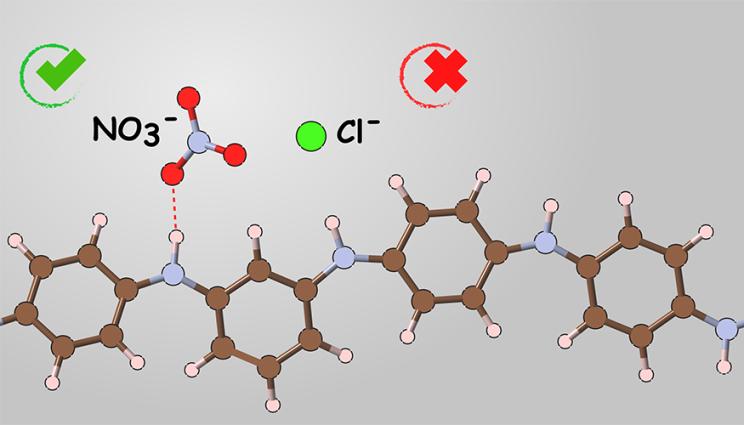
A team of researchers including LLNL scientists developed and electrode that converts nitrogen (NO3) from agricultural runoff into ammonia (Cl) that could transform back to a fertilizer or sell be sold as a chemical feedstock.
The nitrate runoff problem, a source of carcinogens and a cause of suffocating algal blooms in U.S. waterways, may not be a harbinger of doom.
A new study led by the University of Illinois Urbana-Champaign and researchers from Lawrence Livermore National Laboratory (LLNL) demonstrates an approach for the integrated capture and conversion of nitrate-contaminated waters into valuable ammonia within a single electrochemical cell.
The study shows a device capable of an eightfold concentration of nitrate, a 24-times enhancement of ammonium production rate and a greater than tenfold enhancement in energy efficiency, compared with previous nitrate-to-ammonia electrocatalysis methods.
By combining separation with reaction, the team overcame previously existing limitations of producing ammonia directly from groundwater, where the concentrations of nitrate are very low, and makes the conversion step inefficient. The findings appear in the journal Nature Communications.
"The goal of this study was to use as little energy as possible to remove nitrate from agricultural runoff before it hits our waterways, and transform it back to a fertilizer or sell it as a chemical feedstock," said chemical and biomolecular engineering professor Xiao Su from the University of Illinois Urbana-Champaign (U. of I.). "Our technology can thus have an impact on waste treatment, sustainable chemical production and advance decarbonization. We are hoping to bring greater circularity into the nitrogen cycle."
The team developed a unique, bifunctional electrode that can separate and up-concentrate nitrate from a water stream, while converting to ammonia in a single unit using purely electrochemical control.
"The bifunctional electrode combines a redox-polymer adsorbent, which captures the nitrate, with cobalt-based catalysts that drive the electrocatalytic conversion to ammonium," Su said.
The system was tested in the lab using agricultural runoff collected from drain tiles around the U. of I. research farmlands to evaluate the potential of the technology for real-world conditions, the researchers said.
As part of this project, LLNL scientists have leveraged the Lab's high performance computing capabilities to understand the mechanism of this chemical process. "In the broader context, our simulations can also be used to identify promising materials for this platform in the future," said Alexandra Zagalskaya, a LLNL materials scientist and author on the paper.
"This is a very efficient capture and conversion platform with a low footprint," Su said. "We don't need separate electrochemical cells for the water treatment and ammonium production or adding extra chemicals or solvents. Instead, we envision a module installed directly onto farmland and run using the power generated from the electrocatalytic process and a small solar panel."
The team said its next goal is to develop even more selective materials used in the device to achieve higher nitrate removal and accelerate the conversion to ammonia, while engineering larger-scale systems for practical deployment in the field.
LLNL's Anh Pham, who leads the theory task of the project, as well as University of Nebraska researchers also contributed to the work.
The National Alliance for Water Innovation, funded by the Department of Energy, Energy Efficiency and Renewable Energy Office, Advanced Manufacturing Office, and the Institute for Sustainability, Energy, and Environment at Illinois supported the study.






